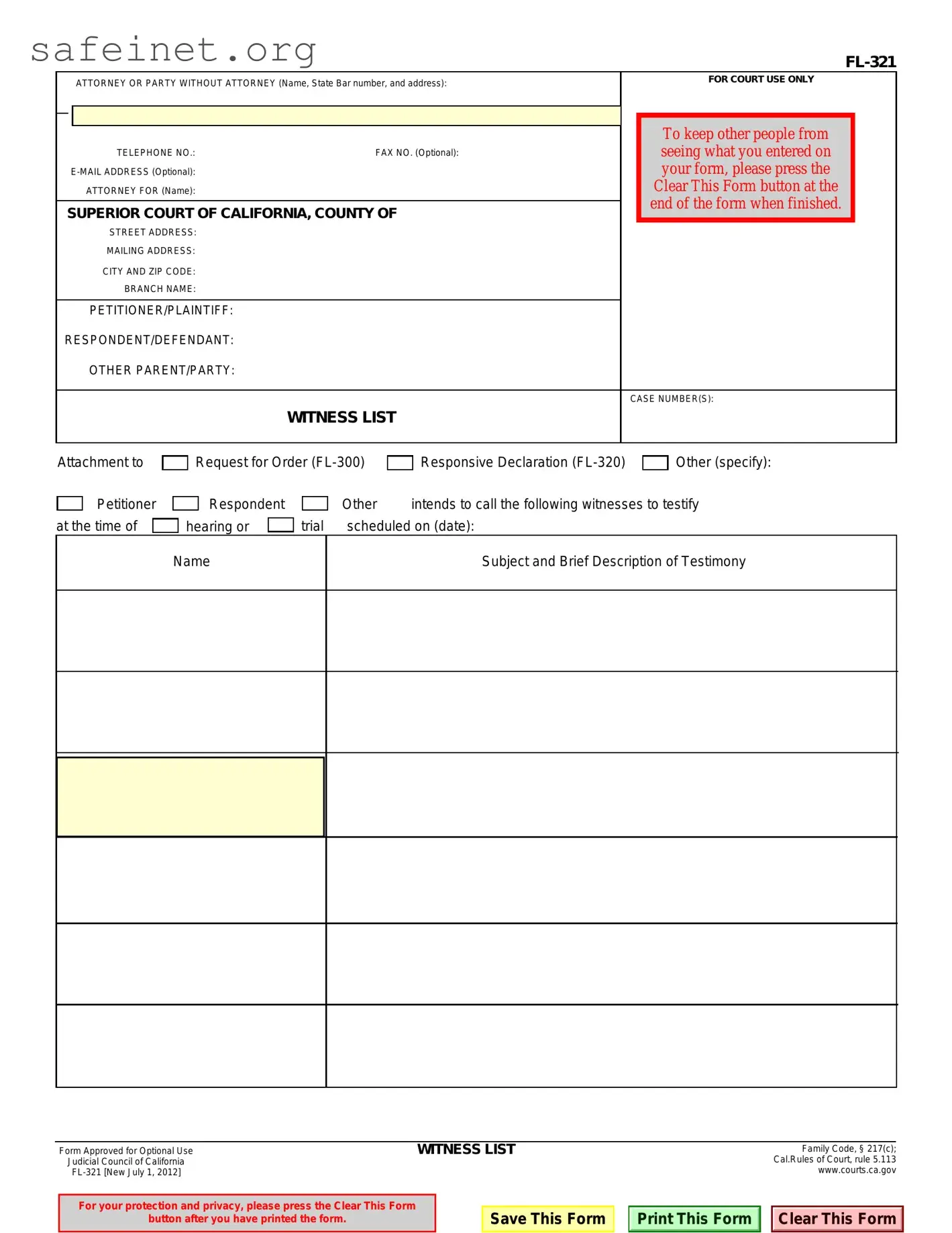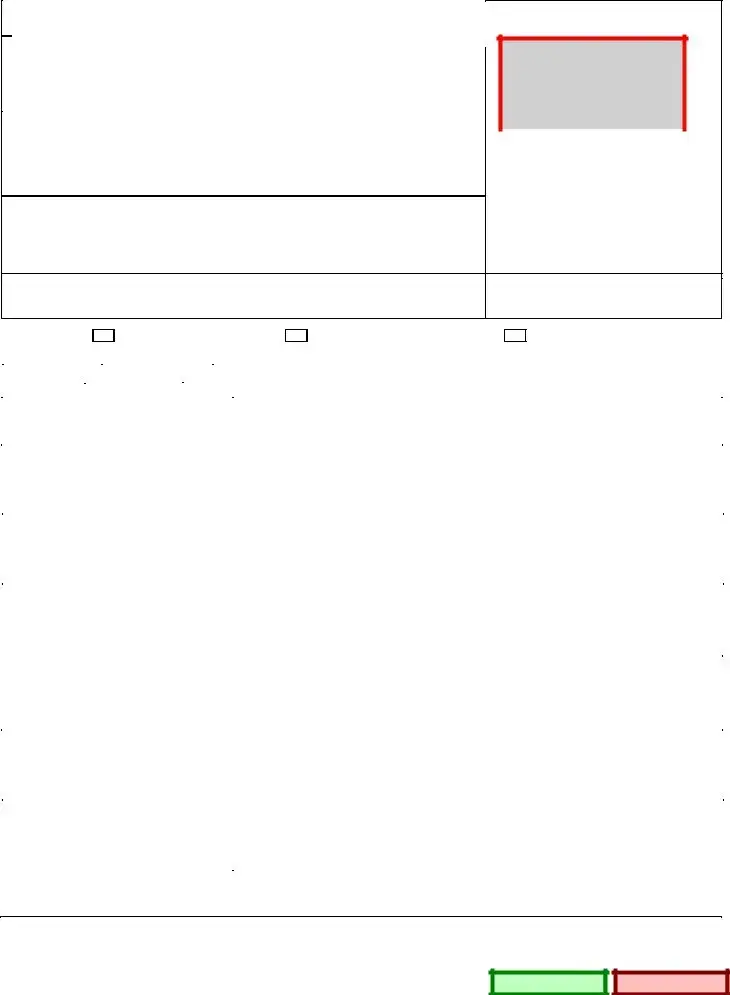The FL-300 form, also known as the Attachment to Request for Order, functions similarly to the FL-321 form in that it allows parties to present specific information to the court regarding their requests. This form helps individuals outline the details required to support their request for a court order, whether it involves custody, support, or other family law issues. Just as the FL-321 facilitates the introduction of witness testimony, the FL-300 provides a structured approach to submit additional evidence essential for the court’s consideration during hearings.
The FL-320 form, titled Responsive Declaration, serves a purpose akin to both the FL-321 and FL-300 forms. It is used by parties to formally respond to requests made by the opposing party, allowing them to articulate their position and present their evidence or objections. This form encourages communication between parties and keeps the court informed of both sides of the matter, much like the FL-321’s witness listing process. In essence, it captures the ongoing dialogue in family law disputes, ensuring that all relevant information—including witness testimonies—is acknowledged.
The FL-321 form is also comparable to the FL-317 form, known as the Notice of Motion. This document is used to notify the other party of a forthcoming motion in family court. While the FL-321 focuses specifically on listing witnesses, the FL-317 informs the other party about the motion itself and the intent behind it. Both forms ensure transparency in family law proceedings, as each party is made aware of the actions being taken and the evidence that may be presented, thus promoting fairness in the legal process.
Lastly, the FL-300 form can be linked to the FL-310, which is the Request for Order. This document initiates a request to the court for various types of orders, including those related to custody and support. Similar to the FL-321, it allows parties to specify the relief sought and the basis for that request. Both forms emphasize the importance of clear communication with the court, helping to outline not only the claims being made but also the evidence, such as witness testimony, that supports those claims.

